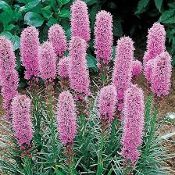$7.50
Andropogon gerardii, Big Bluestem, Native Grasses, Perennial Grass Plugs
Wholesale pricing is based on quantity. 50 plants (plugs) per tray with a required minimum purchase of 5 plants per species.
5 or more $7.50 each
25 or more $3.50 each
50 or more $1.65 each
300 or more $1.50 each
1,000 or more Call
For Shipping, Planting and additional FAQ’s please see “About our organically grown native plug trays “.
See all available Native Perennial Grasses & Organically Grown Plug Trays
Order Minimum
There is a minimum order total of $150.00.
before tax (VA residents only) and shipping.
There are NO EXCEPTIONS.
Description
Andropogon gerardii, Big Bluestem, Native Grasses, Perennial Grass Plugs
Botanic Name (s): Andropogon gerardii
Common Name(s): Big Bluestem
Mature height :2-6.5′
Mature spread:2-3ft
Flower Color/ Bloom Time : June-Sept
Fall Color: Blue / Reddish purple
Sun Exposure: Full Sun Part Sun
Soil moisture: Dry Average Moist Wet
Soil Ph:6-7.5
Soil Type: Clay Soil- High clay content, fine texture
Loamy Soil- mostly silt, sand, some clay
Sandy soil, coarse texture
Native Habitat: Dry to wet open woods, prairies, swales, shores, dry open areas
Notes: Clumping form, attractive winter interest
Erosion Control Four Season Interest
Average Wildlife Value: Songbirds Small Mammals
FAC- Occur in wetlands and non-wetlands
Native To Mountain Regions
Native to Piedmont Regions
Andropogon gerardii, Big Bluestem, Native Grasses, Perennial Grass Plugs
The uses and benefits of Big Bluestem include erosion control, forage production, landscaping, grassland restoration, privacy screens, and pollinator conservation. Wildlife benefits include bedding and resting sites, thermal protection, escape cover, avian cover, nesting sites, food, and fawn concealment.
“Big blue” as it is commonly called is a climax prairie species. However, it can tolerate a wide variety of well-drained soils and typically does well on low fertility sites. Big blue is commonly used in erosion control plantings; although it is sometimes slow to get started. Once it has been established, however, it provides excellent stability for sandy areas. This species is also a good native choice for grazing forage and is very palatable to livestock. As with the other bluestems, big blue also provides excellent wildlife habitat. Bobwhite quail and other ground-nesting birds use this clump-forming grass for nesting and forage cover. In the longleaf pine ecosystem, the perennial big bluestem contributes to the fine flashy fuel needed for the maintenance of the ecosystem.
Read More from the USDA:
See all available native Grasses.






